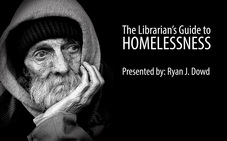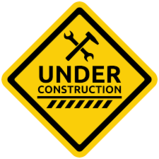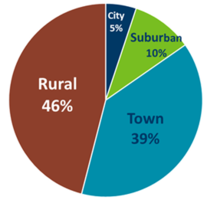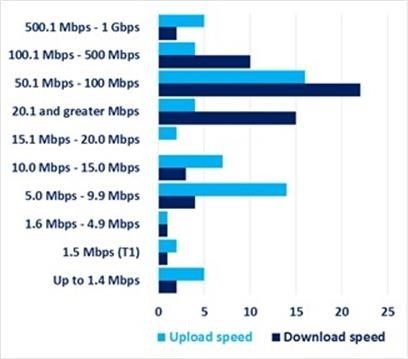|
|
Updates from State Library Services

Work Confidently with Homeless
Patrons
The Minnesota
Department of Education is committed to supporting the state’s Heading Home Together plan, and
library staff training is one of our goals. All library administrators, staff,
board members, and volunteers now have free year-long access to “Practical Tips
for Homeless Patrons,” an online, self-paced tutorial presented by Ryan Dowd,
the author of The Librarian’s Guide to Homelessness. Through the course, participants will gain insights into the mind of a person
experiencing homelessness—how they communicate, likely experiences that color
their worldview, and possible triggers to behavior escalation. Through an
empathy lens, library staff and volunteers will also gain tips and tricks for
welcoming, serving, and supporting homeless patrons.
To take the
training, follow the enrollment steps on the Niche
Academy website. Contact Jen Verbrugge
(651-582-8356) if you have access issues or other questions.
|
 Apply for a Library Construction Grant
The Library
Construction Grant program is accepting applications for
competitive grants. The program provides public libraries with funding for
renovation, construction, and improvement projects that result in more
accessible library facilities. Projects may:
- Remove architectural barriers from a library building or site.
- Remediate conditions hazardous to health or safety.
- Renovate or expand an existing building for use as a library.
- Construct a new library.
The 2018 Minnesota Legislature allocated a total of
$1,000,000 to the program. In addition, approximately $400,000 of the
allocation from the 2017 bonding bill is available to award as grants, for an estimated total of $1,400,000.
Application forms and instructions are available on the Minnesota
Department of Education’s Grants Management site. Scroll to
Library Construction Grant opportunity. Completed applications are due via
email by Friday, October 26, 2018, at 3:30 p.m.
A webinar with program information and opportunities to ask questions
will be held on Thursday, August 30, 2018, at 11 a.m. To attend the webinar,
please follow this link. To join by phone,
dial 1-888-742-5095, and enter conference code 492 064 9083 at the prompt.
For more
information, please contact Emily
Kissane (651-582-8508).
|
 Join Girls Who Code Partnership
and Launch a FREE Club
State Library Services is partnering with Girls Who Code to bring
free computer science opportunities to elementary, middle, and high school girls
(and boys) across Minnesota. We would love for your school or library to host a
club!
Girls Who Code Clubs are
no-cost afterschool programs for
girls in grades 3-5 or grades 6-12 to join a fellowship of
supportive peers and use computer science to change the world. The program targets girls, but no one is excluded from participating, so boys are welcome too. Clubs are led by
facilitators who can be teachers, librarians, parents, or volunteers from any
background or field. No prior knowledge is required; many facilitators have no
technical experience and learn to code alongside their club members. Read
through an overview
of the curriculum for both
age groups, and then attend a Girls Who Code webinar to help you learn more. You can also contact Leah Larson (651-582-8604)
if you have questions about how to get started.
*Important Note: To receive partnership benefits when you register your club, it is
important that you indicate that State Library Services is your partner. Please
list “Minnesota State Library Services” as your partner affiliation on the
application’s page titled “About Your
Club” for the following question: Is your Club affiliated with a
Girls Who Code Community Partner (school districts, library systems, nonprofit
organization, afterschool networks, etc.)?
|
|
|
Updates from our Partners
 View the Results of the Libraries
and Nature Survey
The Minnesota Children and
Nature Connection (MCNC) worked with libraries statewide last year to learn
more about how they are incorporating nature into their spaces and services. The
intention was to gather baseline data on the breadth and depth of connection
libraries help families make with nature. MCNC was also interested in
identifying needs, interests, and barriers to libraries’ abilities to offer
nature programming and services. There were 75 total respondents to the survey,
and you can view the results through a summary
infographic or informational
slides on the MCNC website. Contact Jen Verbrugge
(651-582-8356) if you have questions.
|
 Submit Your Library Construction
Project to LJ
The
2018 Library Journal (LJ) architectural
feature will be published in the November 15, 2018, issue. LJ is now collecting data for finished public and academic library
projects—new builds and renovations/additions—completed between July 1, 2017,
and June 30, 2018, only. Share the information about your public
library construction project by Wednesday, September 12.
Additionally, if you had or are having referenda for capital improvements, operating
funds, or both between December 1, 2017, and November 30, 2018, share the
results with research manager Laura Girmscheid.
|
 Get to Know Rural Libraries
Most of Minnesota’s public
libraries are in towns and rural areas. Rural and town libraries welcomed about
a third of the state’s 3.7 million library users and hosted approximately 23.3
million visits in 2017.
Sixty-three public libraries are
located in rural areas—territory that is five or more miles from an urbanized
area. Most rural libraries are small serving areas with populations under
5,000.
On average, a rural public library
in Minnesota employed two staff members, was open 2,164 hours and welcomed
25,100 visitors in 2017. Those visitors borrowed or downloaded 35,024 items and
asked 2,352 reference questions. Each library attracted 1,788 individuals of
all ages to 97 library-sponsored programs. Of course, actual performance
measures vary among individual libraries.
In rural areas, public libraries
are often the only place where internet access is free. People use library
computers or bring their own mobile devices to the library to complete
schoolwork, file taxes, bank online, and search for jobs. Minnesota’s rural
libraries provide 519 internet computers and devices for public use—an average
of eight computers per library. Ninety-seven percent of rural libraries offer
free wireless internet service. In 2017, rural library users logged-on to computers
or wireless service for nearly 356,000 internet sessions—an average of 5,680
annual sessions per library.
Most rural public library locations
have Internet speeds over 20 megabits per second (Mbps). The largest number of
libraries have speeds ranging from 50 to 100 Mbps. Benchmarks set by the
Federal Communications Commission (FCC) for U.S. home access is 25 Mbps
download and 3 Mbps upload speeds. 100 Mbps is the FCC goal for all libraries
serving 50,000 people or less.
The public library has become a hub
with a mission to help solve community problems. Fifty-nine percent of
Minnesota’s rural public libraries partner with other organizations in their communities
to address social issues.
Rural public libraries contribute
significantly to the cultural, educational and digital lives of the populations
they serve. For information about public libraries by locale, contact Joe Manion (651-582-8640).
|
 Number of rural public libraries by internet speed; Source: Minnesota Public Library Report, 2017
Back to Top
|
|
|
Back to Top
 State Library Services, a division of the Minnesota Department of Education (MDE), partners with libraries to achieve equity and excellence in our collective work for Minnesotans. Division staff are consultants who help libraries plan, develop and implement high-quality services that address community needs. State Library Services administers federal grant, state aid, and state grant programs that benefit all types of libraries.
|
|
|
|